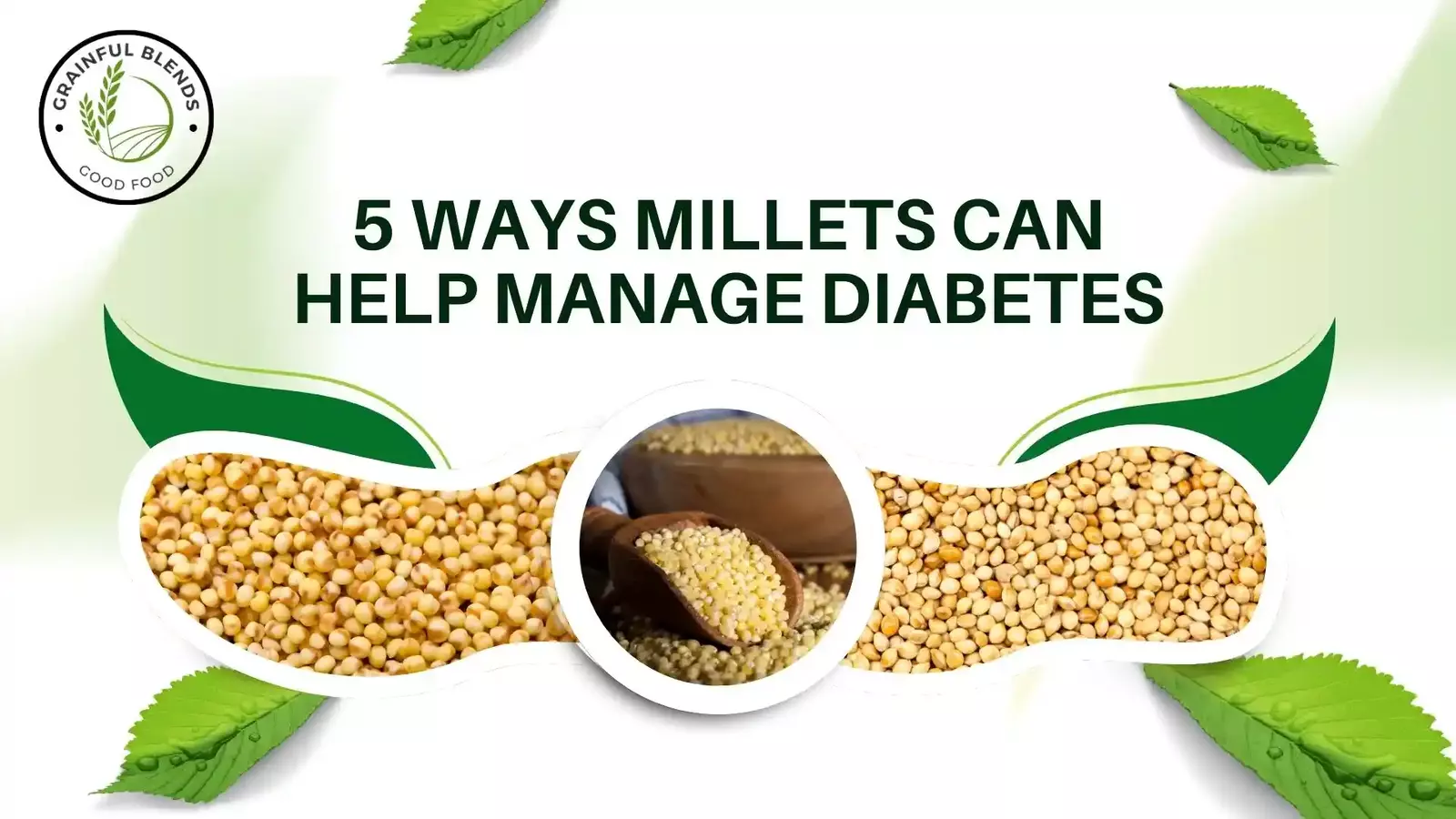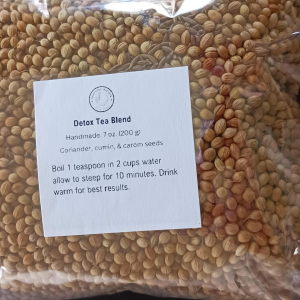5 Ways Millets Can Help Manage Diabetes
5 Ways Millets Can Help Manage Diabetes
Introduction to Millets and Diabetes
Managing diabetes involves careful dietary choices, and millets, a group of small-seeded grains, have emerged as a promising option. Known for their nutritional richness, millets include varieties like foxtail, pearl, and finger millet, offering benefits that may help control blood sugar levels. This post explores how millets can support diabetes management, providing practical insights for incorporating them into your diet.
Five Ways Millets Help Manage Diabetes
Below are five key ways millets can assist in managing diabetes, backed by research and nutritional data:
- Low Glycemic Index (GI):
Millets have a low to medium GI, meaning they release glucose slowly into the bloodstream, helping prevent blood sugar spikes. For example, foxtail millet has a GI of 50-60, lower than rice or wheat (Millets for diabetes: Benefits, nutritional content, and more). - High Fiber Content:
With about 2.26 grams of fiber per cup of cooked millet, fiber slows carbohydrate digestion, aiding blood sugar control and promoting satiety (Millet Nutrition Facts and Health Benefits). - Enzyme Inhibition:
Polyphenols in millets inhibit enzymes like alpha-glucosidase, reducing the breakdown of complex carbohydrates into simple sugars, which helps lower postprandial hyperglycemia (Managing Diabetes Mellitus With Millets: A New Solution). - Rich in Antioxidants:
Millets contain antioxidants like ferulic acid and catechins, which combat oxidative stress and inflammation, common in diabetes, potentially reducing related complications (The nutritional use of millet grain for food and feed: a review). - Rich in Magnesium:
A cup of cooked millet provides 44 mg of magnesium (10% of daily value), supporting insulin function and glucose metabolism, which is crucial for diabetes management (Millet Benefits: An In-Depth Look at this GF Ancient Grain | Best in Gluten Free | Schar).
Practical Tips for Including Millets
To benefit from millets, consider these ideas:
- Start your day with millet porridge or use millet flour for pancakes.
- Substitute rice with millet in salads or stir-fries for lunch and dinner.
- Snack on popped millet or millet-based granola bars for a healthy option.
These methods can help maintain balanced blood sugar levels while keeping meals enjoyable.
Comprehensive Analysis: Millets and Diabetes Management
Background and Context
Diabetes, a chronic condition affecting millions globally, requires meticulous dietary management to control blood sugar levels and prevent complications. Millets, ancient grains consumed widely in Africa and Asia, have gained attention for their potential in diabetes management. This section delves into the nutritional profile and specific benefits of millets, supported by research and practical applications, ensuring a thorough understanding for readers.
Nutritional Profile of Millets
Millets are classified into major types (e.g., sorghum, pearl millet, finger millet) and minor types (e.g., foxtail, little, kodo millet), each with varying nutritional content. Research indicates millets contain 65-75% carbohydrates, 7-12% proteins, 2-5% fat, and 8-15% fiber, making them nutrient-dense (The nutrition and therapeutic potential of millets: an updated narrative review). They are also rich in minerals like calcium, iron, and magnesium, and provide essential vitamins, enhancing their suitability for diabetic diets.
Detailed Examination of Five Benefits
- Low Glycemic Index (GI):
The glycemic index measures how quickly foods raise blood sugar levels. Millets typically have a GI range of 40-70, lower than wheat, refined flour, rice, and maize, leading to gradual blood sugar increases. For instance, foxtail millet’s GI is around 50-60, as noted in a study from the Journal of Food Science and Technology, making it ideal for preventing spikes in diabetic patients (Millets for diabetes: Benefits, nutritional content, and more). - High Fiber Content:
Fiber is crucial for slowing carbohydrate digestion, improving insulin sensitivity, and promoting satiety. A cup of cooked millet contains approximately 2.26 grams of fiber, contributing to better blood sugar management. This is supported by nutritional data from the USDA, highlighting millets’ role in reducing the rate of sugar absorption into the bloodstream (Millet Nutrition Facts and Health Benefits). - Enzyme Inhibition:
Millets contain polyphenols, natural compounds that inhibit alpha-glucosidase and pancreatic amylases, enzymes responsible for breaking down complex carbohydrates into simple sugars. This mechanism reduces postprandial hyperglycemia, as evidenced by a study in the Journal of Agricultural and Food Chemistry, which found phenolic compounds in millets effectively lower blood sugar levels after meals (Managing Diabetes Mellitus With Millets: A New Solution). - Rich in Antioxidants:
Diabetes is often associated with oxidative stress and inflammation, increasing the risk of complications like heart disease and neuropathy. Millets are rich in antioxidants such as ferulic acid, catechins, and tannins, which neutralize free radicals and reduce inflammation. A review in PMC notes the presence of these compounds, particularly in finger and pearl millets, enhancing their protective effects (The nutritional use of millet grain for food and feed: a review). - Rich in Magnesium:
Magnesium is vital for insulin function and glucose metabolism, with low levels linked to insulin resistance. A cup of cooked millet provides 44 mg of magnesium, about 10% of the daily value, supporting better diabetes management. This is corroborated by nutritional data from Schär, emphasizing millets’ role in maintaining healthy insulin responses (Millet Benefits: An In-Depth Look at this GF Ancient Grain | Best in Gluten Free | Schar). Further, raw millet contains up to 114 mg per 100g, corresponding to 29% of the RDA, as per dietary analysis (Magnesium in millet, per 100g).
Specific Benefits by Millet Type
Different millet types offer varying benefits, enhancing their applicability for diabetes management:
- Finger Millet (Ragi): High GI index of 70-80 with high in calcium (344 mg per 100g) and phytic acid, it reduces carbohydrate digestibility, mitigating postprandial blood glucose levels.
- Foxtail Millet: With a GI of 50-60 and 12.3% protein, it delays gastric emptying, decreasing post-consumption blood glucose levels.
- Little Millet: GI 50-65, protein 7.7%, prevents blood glucose spikes, aiding diabetes control.
- Pearl Millet: GI 70-85, protein 10.6%, increases insulin sensitivity and reduces triglyceride levels, suitable for diabetes management.
- Sorghum: GI 70-85, protein 10.4%, highly soluble fibers reduce type II diabetes risk.
Practical Incorporation into Diabetic Diets
Incorporating millets into daily meals can enhance diabetes management. Here are some strategies and recipes:
- Breakfast Options: Millet upma, made with foxtail or barnyard millet, is a savory, fiber-rich choice. For example, roast 1 cup of millet, add vegetables, and cook with water for a nutritious meal (Top 5 Millet Recipes for Diabetics – Desinutri Foods).
- Lunch and Dinner Substitutes: Use millet as a base for salads or stir-fries, replacing rice or quinoa, ensuring balanced carbohydrate intake.
- Snacks: Popped millet or millet-based granola bars offer healthy, low-GI snack options, supporting blood sugar stability.
Cooking tips include soaking millets for 6-8 hours to improve digestibility and using minimal processing to retain nutrients, as advised in health-focused articles (5 Best Millets for Diabetes that lowers blood sugar in 2025).
Considerations and Limitations
While millets offer significant benefits, individual responses may vary based on millet type, preparation methods, and personal health conditions. For instance, some millets have higher GI (e.g., pearl millet at 70-85), which may require portion control. Additionally, antinutrients like phytic acid can affect mineral absorption, though soaking and sprouting can mitigate this. Consulting a dietitian is recommended to tailor millet consumption to specific needs.
Conclusion
Millets present a promising dietary option for diabetes management, supported by their low GI, high fiber, enzyme-inhibiting polyphenols, antioxidant richness, and magnesium content. By integrating millets into meals through various recipes and mindful preparation, individuals can potentially improve blood sugar control and overall health. This comprehensive approach, backed by scientific research, underscores millets’ role in a balanced diabetic diet.







